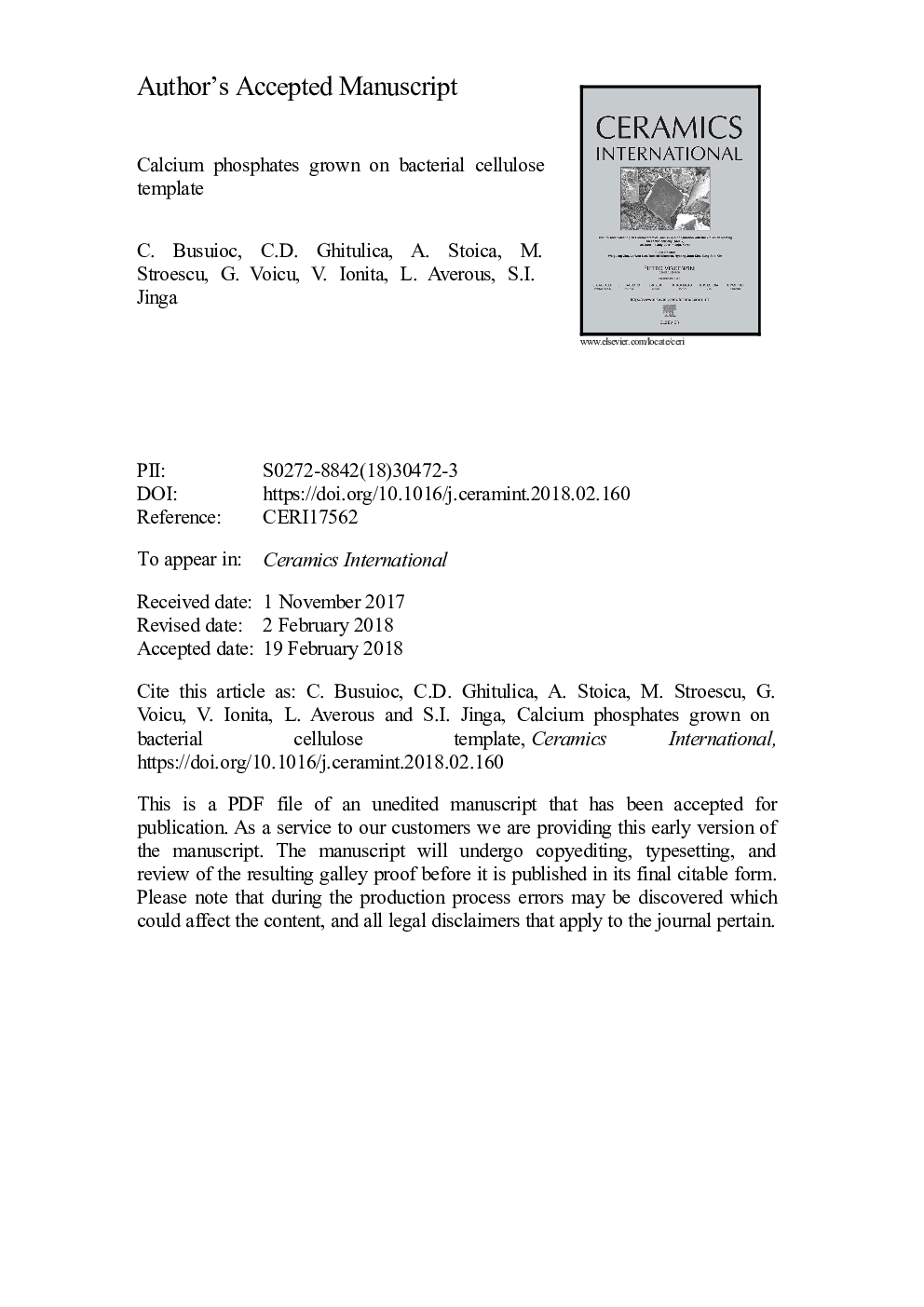| Article ID | Journal | Published Year | Pages | File Type |
|---|---|---|---|---|
| 7887906 | Ceramics International | 2018 | 34 Pages |
Abstract
Bacterial cellulose membranes were employed as templates for calcium phosphates deposition by successive immersion in solutions of Ca(NO3)2·4H2O and (NH4)2HPO4, under ultrasonication. During the wet chemical reaction, mineral phases were loaded on bacterial cellulose fibrils, leading to precursor hybrid composites. These were subjected to a lyophilisation procedure in order to preserve the 3D porous aspect and afterwards to a thermal treatment with the aim of removing the polymeric phase and generating well crystallized structures. Different types of morphologies were achieved by varying the heating rate, as well as the calcination temperature and period. The as-prepared samples and the final ones were investigated from compositional and structural point of view through X-ray diffraction and Fourier-transform infrared spectroscopy and morphologically concerning by scanning electron microscopy. The magnetic properties were also evaluated in order to demonstrate the suitability of the obtained materials for the development of magnetic scaffolds dedicated to hard tissue applications.
Related Topics
Physical Sciences and Engineering
Materials Science
Ceramics and Composites
Authors
C. Busuioc, C.D. Ghitulica, A. Stoica, M. Stroescu, G. Voicu, V. Ionita, L. Averous, S.I. Jinga,
